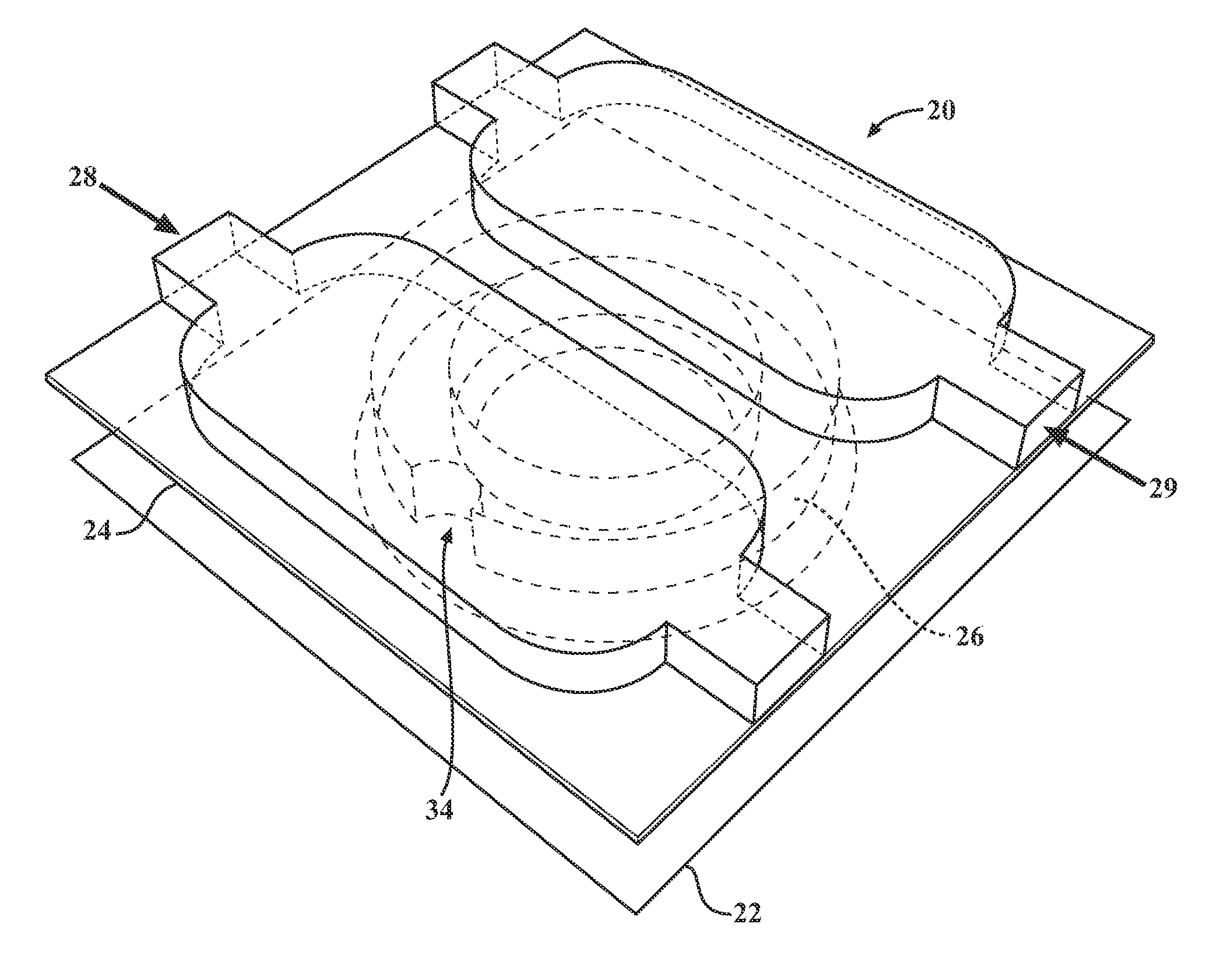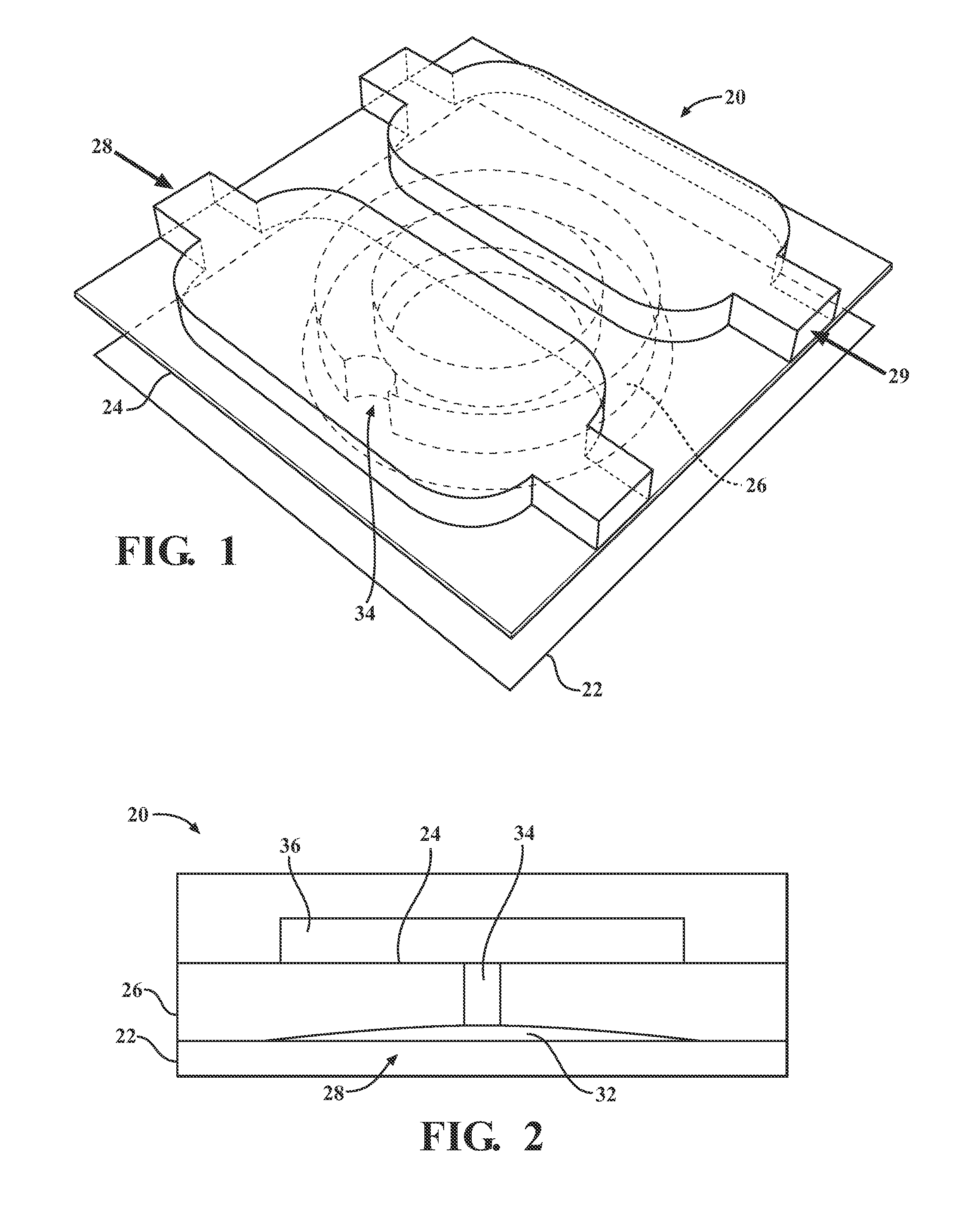Microfluidic platform for discrete cell assay
a microfluidic platform and discrete cell technology, applied in the field of microfluidic platforms for cell assays, can solve the problems of difficult single-cell level analysis using traditional tools, difficult to perform single-cell level analyses using traditional tools, and not designed to permit the introduction into the cell chamber of multiple cells
- Summary
- Abstract
- Description
- Claims
- Application Information
AI Technical Summary
Benefits of technology
Problems solved by technology
Method used
Image
Examples
Embodiment Construction
[0026]Described below are embodiments of a microfluidic device and method for analyzing cell signaling and cell-cell interactions which can be done in single-cell resolution. As will become apparent from the description below, the illustrated microfluidic chamber permits (1) controllable cell loading at single-cell resolution, (2) the ability to isolate individual cells or small groups of cells together in close proximity in a microenvironment, and (3) biological assays to examine not only single-cell culture assays, but also the effect of cell-cell interactions by contact and / or via secreted soluble factors. The disclosed microchamber designs are also scalable to permit highly parallel assays of individual cells or individual groups of cells.
[0027]FIGS. 1-3 depict a microfluidic device having a single microchamber 20 that generally comprises a substrate 22, chamber upper wall 24, a chamber sidewall structure 26 that extends downwardly from the upper wall 24 towards the substrate 22...
PUM
 Login to View More
Login to View More Abstract
Description
Claims
Application Information
 Login to View More
Login to View More - R&D
- Intellectual Property
- Life Sciences
- Materials
- Tech Scout
- Unparalleled Data Quality
- Higher Quality Content
- 60% Fewer Hallucinations
Browse by: Latest US Patents, China's latest patents, Technical Efficacy Thesaurus, Application Domain, Technology Topic, Popular Technical Reports.
© 2025 PatSnap. All rights reserved.Legal|Privacy policy|Modern Slavery Act Transparency Statement|Sitemap|About US| Contact US: help@patsnap.com



